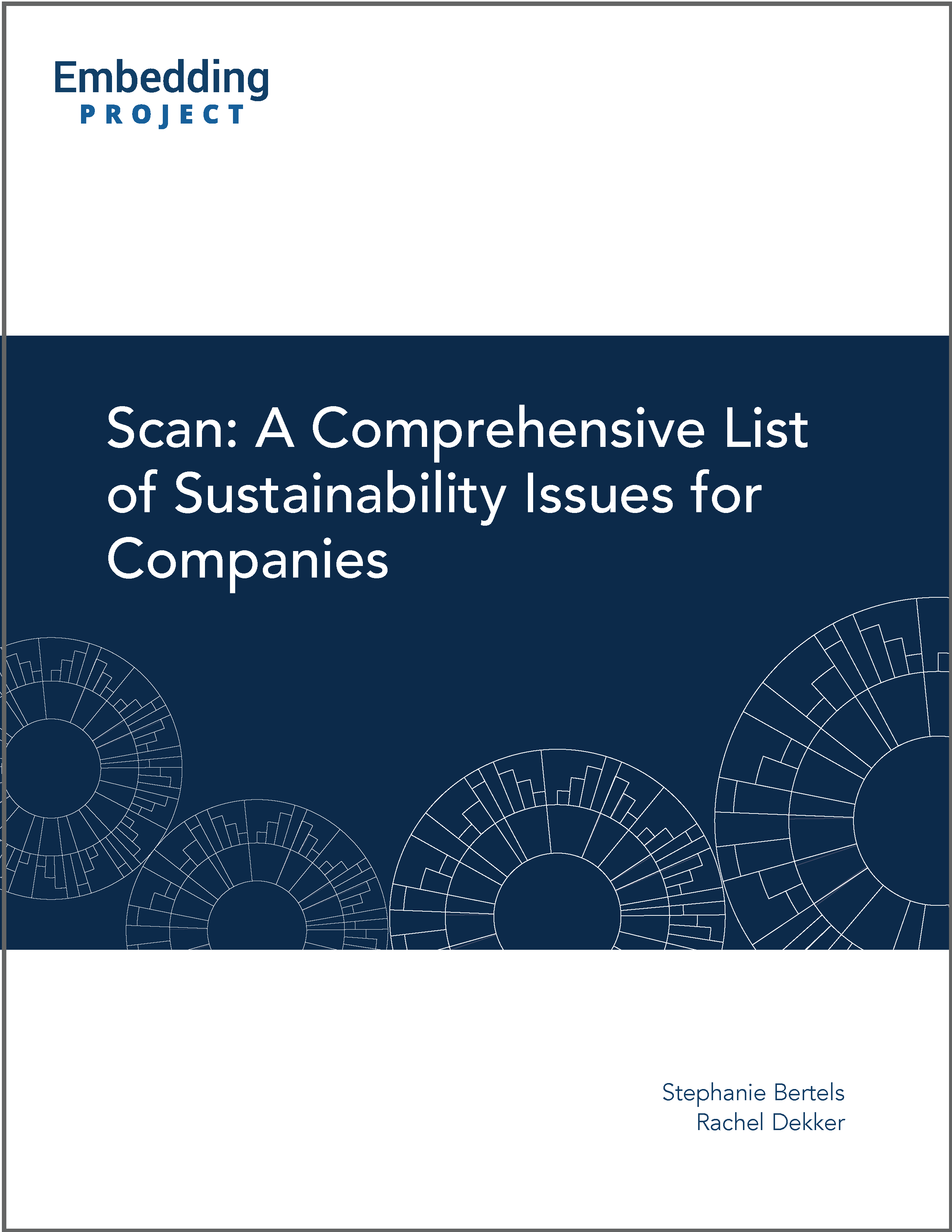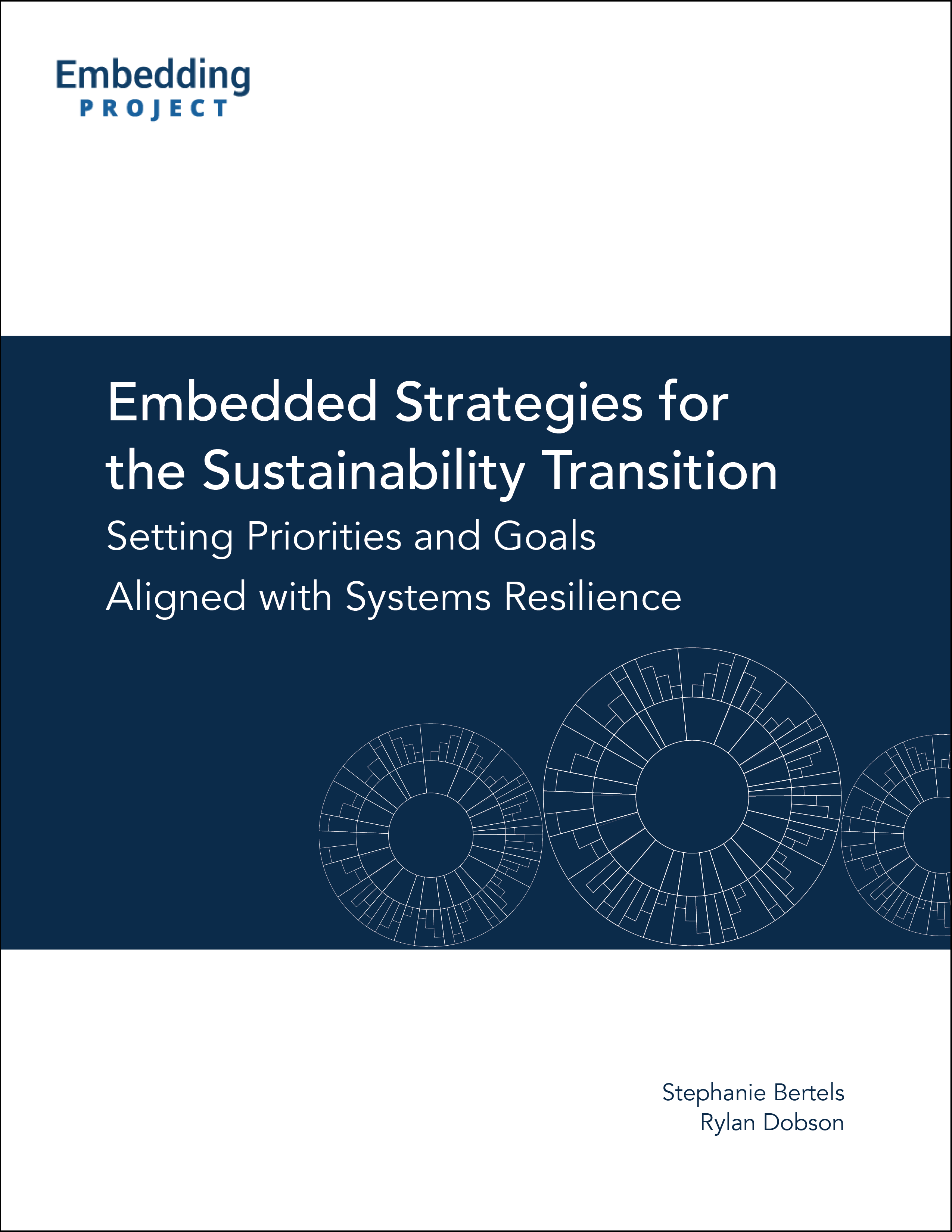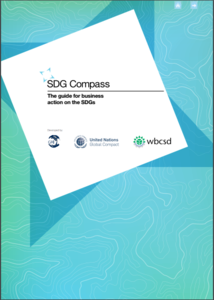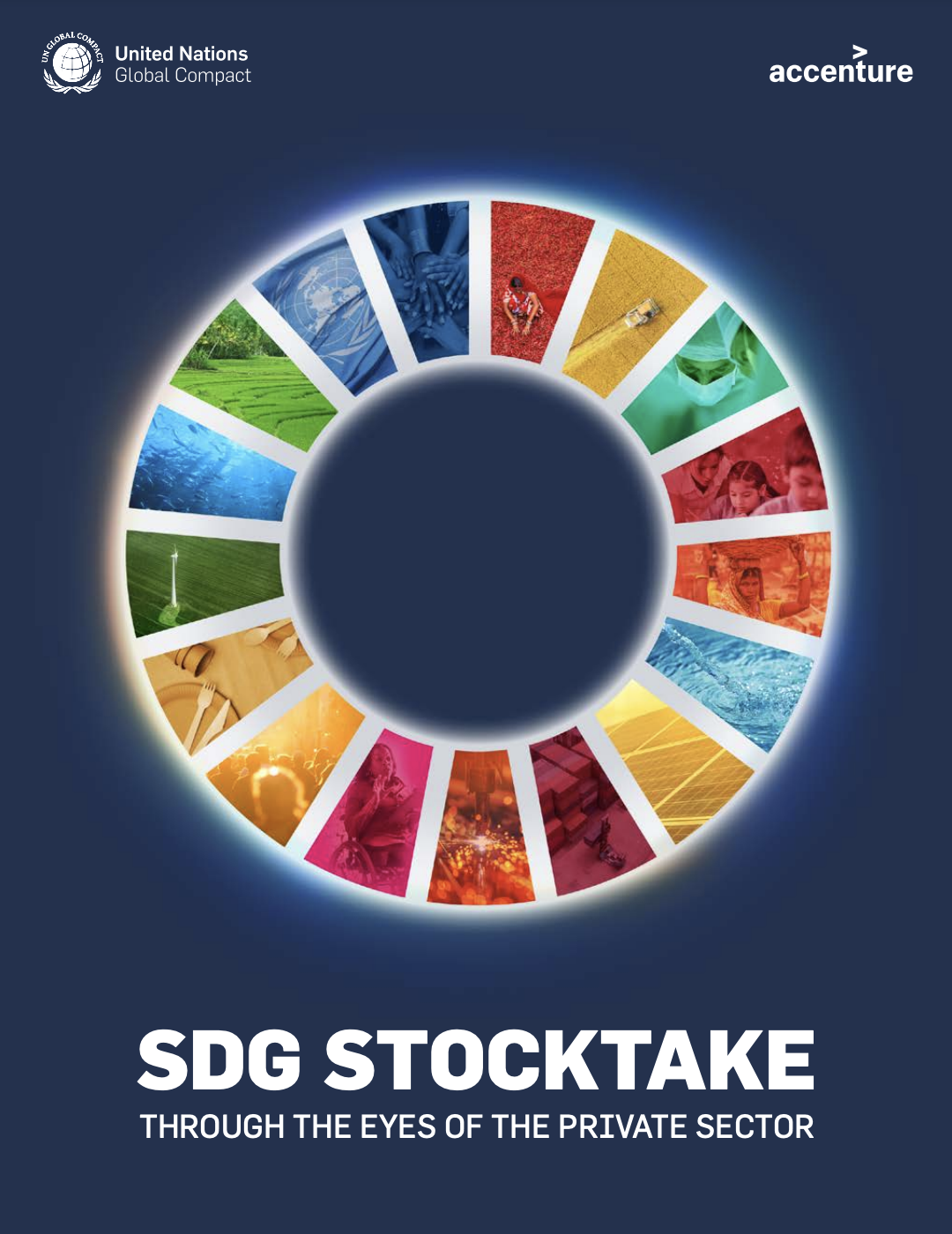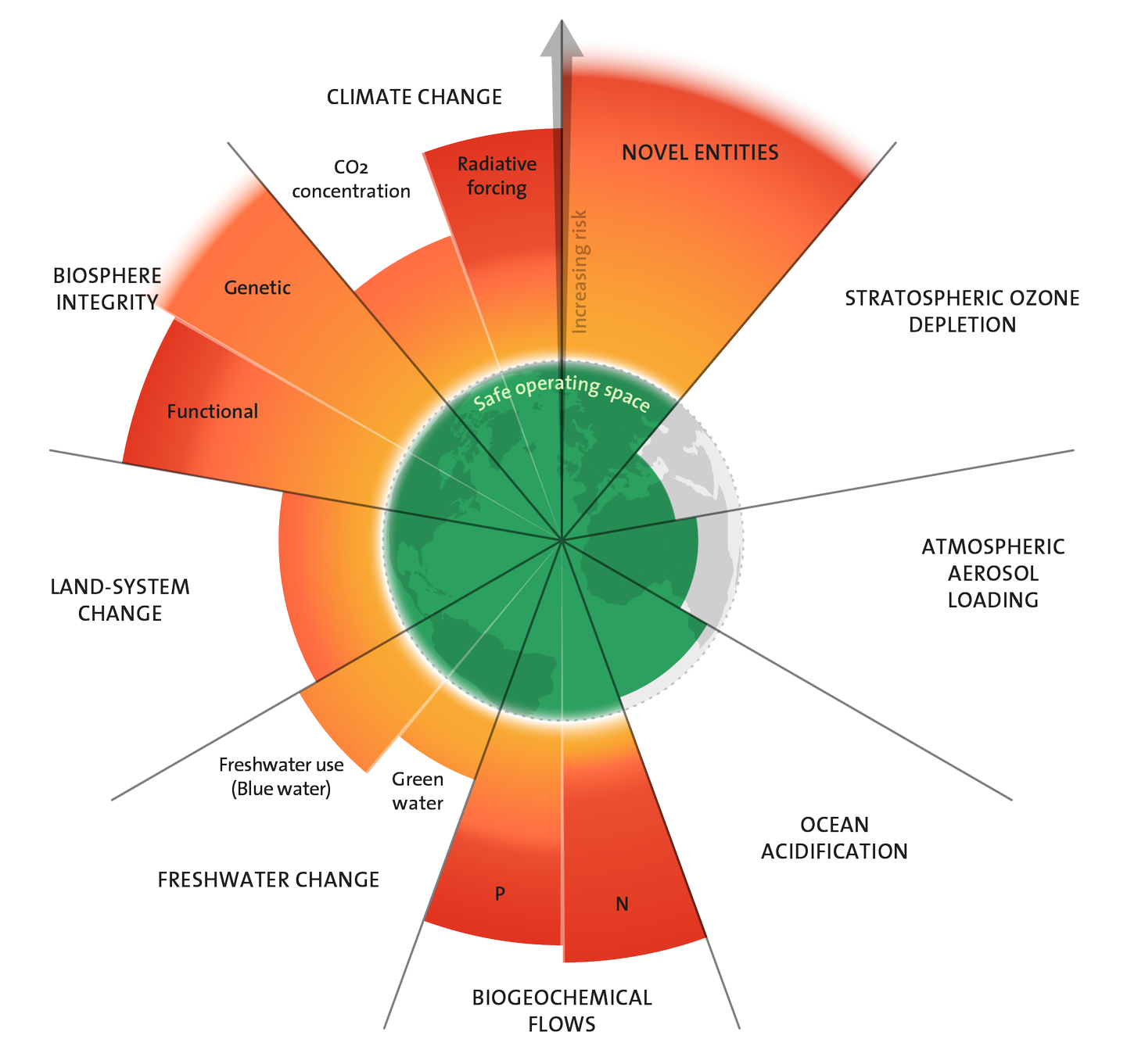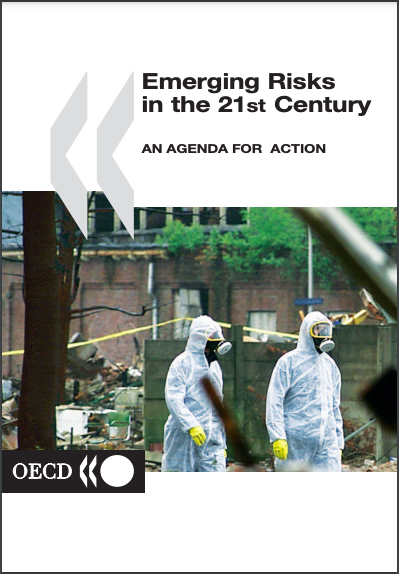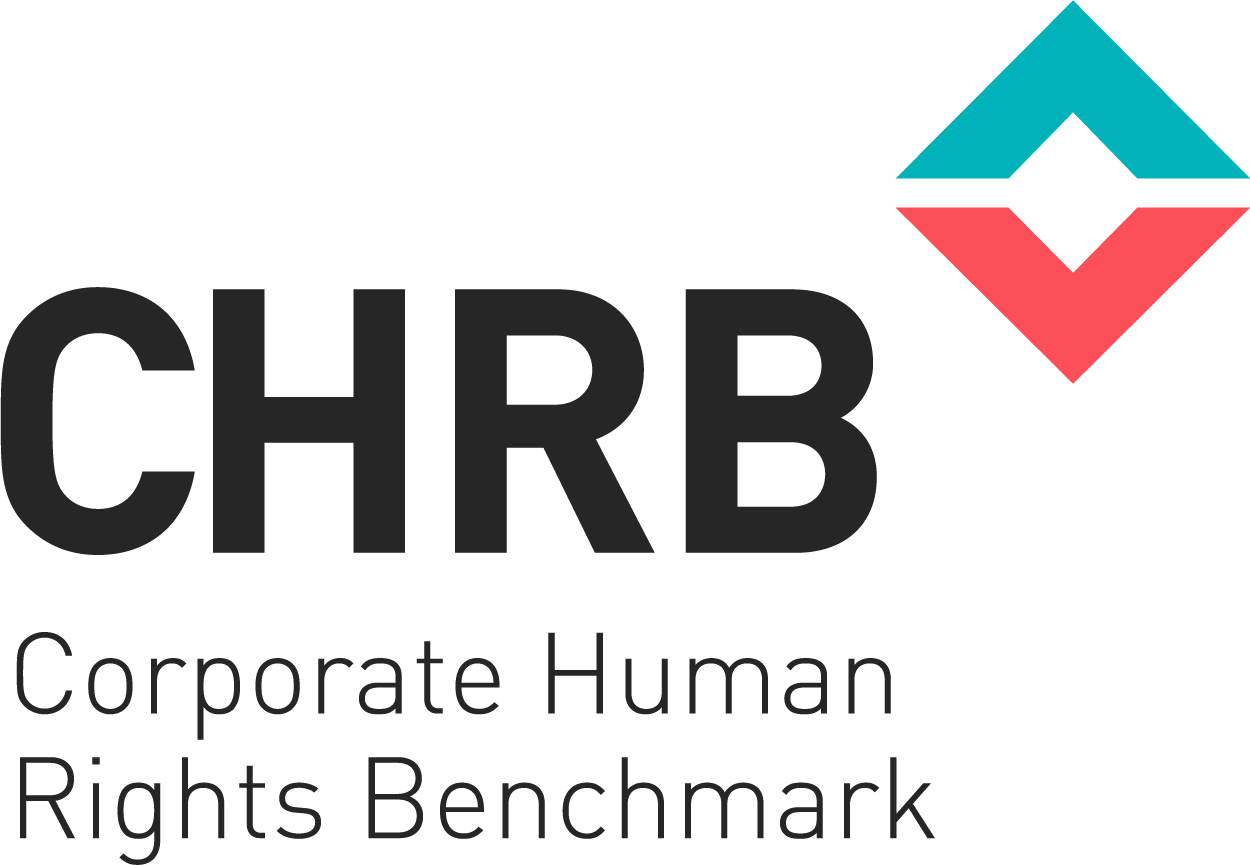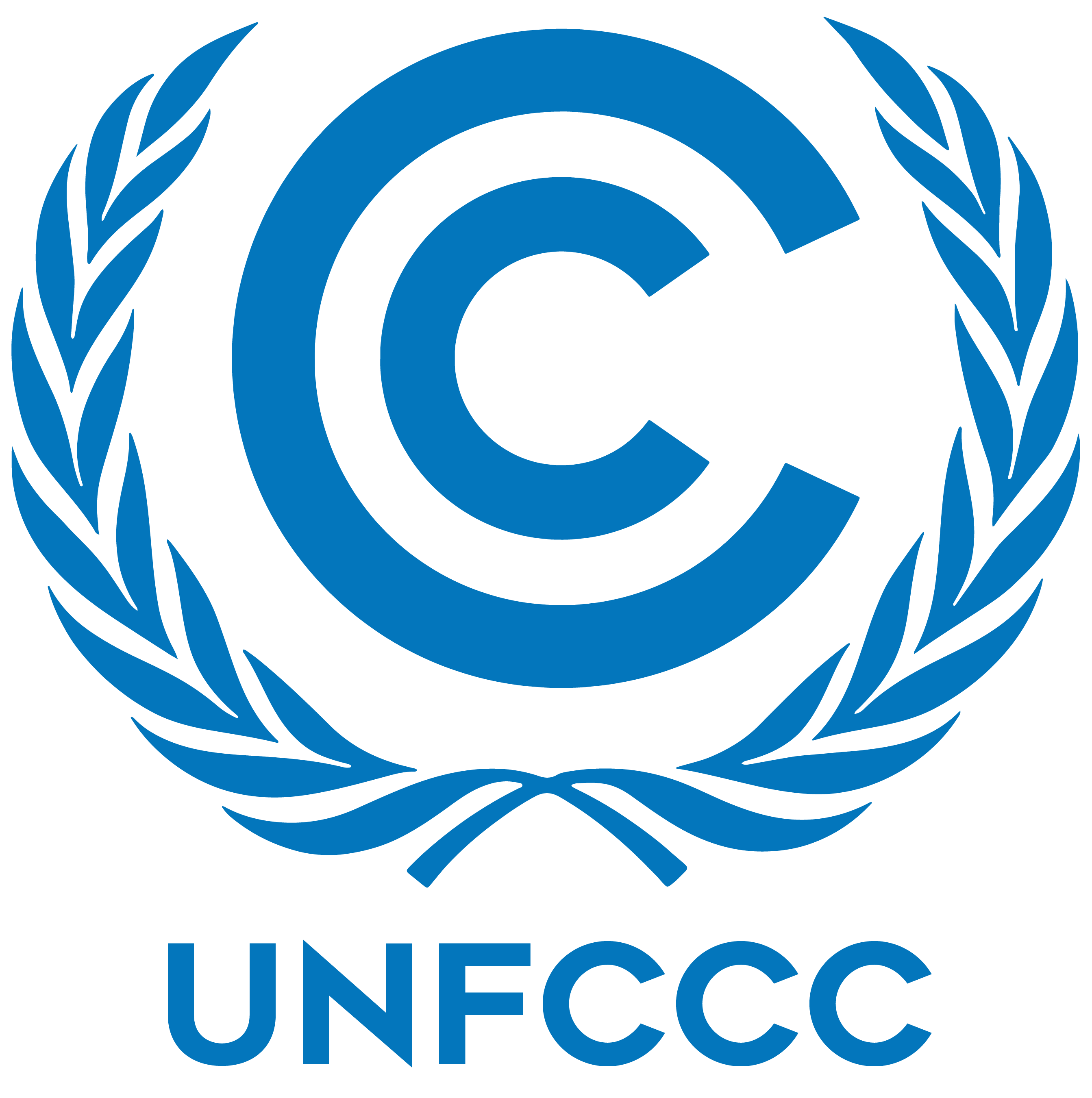Scan
Description
These resources will help you to identify a set of social and environmental issues that are, or may become, particularly relevant to your organisation by building an understanding of external information, underlying trends, and how they apply to your unique operating context.
Share this Practice on:LinkedIn
Resources
Guiding Strategy
Scan: A Comprehensive List of Sustainability Issues for Companies
More companies are becoming interested in understanding how environmental and social factors may impact their business and what impacts their business may have on these issues. This guide provides a comprehensive list of emerging environmental, social, and governance issues, to help you reflect on your company’s impacts and identify where to prioritise action and allocate resources.
Embedded Strategies for the Sustainability Transition
It is time for companies to take a very different approach to corporate strategy.
Our Embedded Strategies guide helps companies respond to the growing calls for businesses to articulate their purpose and their strategy in alignment with the need to shift the global economy towards the reduction of inequality, a rapid climate transition, the preservation of biodiversity, and the elimination of waste.
This guide will help you to develop a contextual strategy and goals that ensure your company is doing its part to maintain the resilience of key social and environmental systems.
Building on our Road to Context guide with insights from 300+ interviews with senior executives, CEOs, board chairs, and directors, as well as our experiences supporting companies around the world, it outlines resources and tactics that can help your company to scan for emerging issues and risks; understand their implications for your business; understand your impacts and your potential for positive influence; prioritise where it makes sense to direct your efforts; and set your strategy and goals in alignment with delivering systems value.
ENCORE (Exploring Natural Capital Opportunities, Risks, and Exposure)
ENCORE (Exploring Natural Capital Opportunities, Risks, and Exposure), a free tool from the Natural Capital Finance Alliance, can help you to visualise how your business may be exposed to accelerating environmental change. The tool provides a snapshot of the dependencies and impacts for a wide range of sub-industries and processes, and includes fact sheets and maps to help you understand the links between business activities and nature.
CEO Guides
The WBCSD has published a number of CEO Guides to provide a high-level overview on the risks and opportunities of corporate sustainability issues. These guides focus on topics such as human rights, water, climate-related financial disclosures, the SDGs, climate action, and the circular economy, and will support executives at your company with understanding key themes and trends, aligning business strategy with critical societal and environmental agendas, and developing and implementing meaningful, credible goals.
SDG Compass
The SDG Compass aims to provide guidance to companies to help align their strategies and measure their contributions to the Sustainable Development Goals. Of particular value is step 3 (setting goals), which focuses on setting specific, measurable, and time-bound corporate sustainability goals across the organisation.
Systems Change Lab
This open-source data platform monitors global progress across major social and environmental systems and identifies transformational shifts needed to protect both people and the planet. The platform uses an interactive visual to highlight progress against climate, biodiversity, and equity targets (among others) and identifies the key forces that are driving positive and negative impacts on each topic. The platform identifies indicators that can show where change momentum is growing and waning, and features a dashboard that shows how systems connect and highlights where coordinated action is most needed. This tool is a good entry point for junior change agents, executives, and other professionals who want to build their understanding of interrelated natural and social systems and the trajectory of actions affecting them.
Good practices for credible benchmarking
ISEAL has created several guides that can help you to ensure the quality, consistency, transparency, robustness, and alignment of benchmarking processes. The Sustainability Benchmarking Good Practice Guide introduces a framework and practical set of good practices for organisations that want to carry out a benchmarking exercise or develop a benchmarking program. Rather than propose specific criteria or requirements to be used in a benchmark, the guide sets out considerations that can help you to create a benchmark development process that meets your company's specific needs. ISEAL has also created a complementary checklist to support these efforts.
The Global Sustainability Competitiveness Index
This index from Solability provides a comprehensive ranking of national sustainability. Using data from the World Bank, the International Monetary Fund, and various other UN agencies, the index groups 216 quantitative indicators into six sub-indexes: Natural Capital, Resource Efficiency & Intensity, Intellectual Capital, Economic Sustainability, Governance Efficiency, and Social Cohesion. This is a good resource for helping you to understand how sustainable a country is, both as an individual and against peers, and for helping you to make informed decisions around siting operations and procurement.
The Future of Sustainability 2024/2025: Reimagining the Way the World Works
This annual report from the Forum for the Future can help you to better understand how business can build resilience to the climate crisis. The 2024/2025 report sets the scene about the future of sustainability, shines a light on bright spots, highlights the possibilities that may emerge if we scale and multiply positive opportunities, and issues a call to focus on transformative action.. This report will be useful to business leaders and change-makers seeking to build business resilience in the face of intersecting crises.
SDG Stocktake: Through the Eyes of the Private Sector
This illustrative report from the UN Global Compact can help you understand the private sector’s net impact on the Sustainable Development Goals (SDGs). It weighs the private sector’s overall positive economic impacts against negative social and environmental impacts, providing an impact overview for each of the 17 goals. It also outlines a private sector blueprint for action by 2030, which includes ten cross-sector actions that businesses can follow to advance the SDGs. The report will be most useful to sustainability teams, especially in organisations that have emphasised SDG alignment in their sustainability reporting and strategy.
Carrots & Sticks: ESG & Sustainability Policy worldwide
This policy database from GRI and partner universities can help you understand the sustainability policy landscape of countries around the world. It covers the voluntary and mandatory policies of 130 countries, and provides a brief analysis for each policy, including restrictiveness, focus areas, and alignment with the SDGs and GRI. Carrots & Sticks also provides an annual report, which examines ESG & sustainability policies and highlights those issuing them. This tool will be most useful to sustainability and legal departments.
Competing in the Age of Disruption
This new report from the Cambridge Institute for Sustainability Leadership (CISL) outlines a pathway for the private sector to proactively respond to our current volatile geopolitical context while continuing sustainability efforts. It identifies six key priorities for navigating today's political and economic instability and accelerating market-wide transition to a more just and sustainable economy, such as shifting from compliance and incrementalism to value, competition, and transformation; escaping the "ESG trap" of tokenistic and reactive actions and prioritising market-wide impact; innovating to create and protect value; and more. This resource will be especially beneficial for sustainability professionals seeking to elevate and explain the issue of the burgeoning global economic transition to senior leaders.
Future Trends
Earth beyond six of nine planetary boundaries
The latest update to the Planetary Boundaries framework finds that six of the nine boundaries are transgressed, with suggesting that Earth is now well outside of the safe operating space for humanity. This is the third major assessment of the planetary boundaries framework, and is the first to provide a complete check-up of all nine processes and systems that maintain the stability and resilience of our planet. This is a key resource for helping sustainability change agents and senior leaders understand the status of environmental limits and ecosystem services foundations that humanity depends upon for survival.
Safe and just Earth system boundaries
This study from the Earth Commission uses modelling and literature assessment to quantify safe and just Earth system boundaries for five critical domains: climate, the biosphere, freshwater, nutrient cycles, and aerosols at global and sub-global scale. It builds on the work of the planetary boundaries framework and proposes a set of safe and just boundaries for maintaining the resilience and stability of the Earth system and for minimising human society’s exposure to significant harm. The paper notes that the just operating space is smaller than the safe one for several of the boundaries, and that several have already been transgressed on a global and local scale. This means that unless a timely transformation occurs, irreversible tipping points and widespread impacts on human well-being are likely to be unavoidable.
Planetary Health Check 2025
This annual report and tool can help you to build a nuanced and holistic understanding of the health of Earth’s vital systems and the actions required to enhance their resilience. The report is created by Planetary Boundaries Science (PBScience), a new initiative led by PIK director Johan Rockström and the Potsdam Institute for Climate Impact Research (PIK), and is supported by the Planetary Guardians and other partners. Combining pioneering Earth science, Earth observation data, and multi-disciplinary thinking, the report quantifies the planet’s health and informs solutions to reverse the impact of human activity on the planet. It documents the latest scientific information on the diverse Planetary Boundary processes; identifies the underlying causes and the interconnectedness of various processes; and connects Planetary Boundary processes to different tipping points, emphasising the need for a whole Earth approach to ensure humanity's future.
The 2025 edition places a special focus on the ocean's role in the Earth system, including the determination that ocean acidification is the seventh Planetary Boundary to be transgressed.
Breaching planetary boundaries: Over half of global land area suffers critical losses in functional biosphere integrity
This study from the Potsdam Institute for Climate Impact Research and BOKU University can help you to understand how different regions of the world are moving beyond "functional biosphere integrity" - the ability of plants to help regulate the planet's life-support systems. In order to uphold functional biosphere integrity, plants must acquire enough energy through photosynthesis to maintain the material flows of carbon, water, and nitrogen that support ecosystems and their processes. Unfortunately, intersecting crises such as climate change, nature loss, and land cover conversion are eroding this capacity. The study finds that 60% of global land areas already exist outside the locally defined safe zone, and 38% are now in high-risk zones.
The study builds on the Planetary Boundaries framework published in 2023, which puts energy flows from photosynthesis at the center of those processes that co-regulate planetary stability. The study finds that stress from human activities on the Earth system can be measured by the proportion of natural biomass productivity that humanity is channeling into its own uses – through harvested crops, residues, and timber, as well as the reduction in photosynthetic activity caused by land cultivation and land sealing. The study added to this measure a second and strong indicator of biosphere integrity: complex structural changes in vegetation and in the biosphere’s water, carbon, and nitrogen balances.
World Economic Forum 2025 Global Risks Report
This report goes beyond identifying key global risks (state-based armed conflict, extreme weather events, geoeconomic confrontation, misinformation and disinformation, societal polarisation, etc.) to considering the interconnections between them, and speculating on how they may play out in the near future. This may help you in thinking through what these large-scale systemic risks might mean for your organisation.
Welcome to the Great Unraveling: Navigating the Polycrisis of Environmental and Social Breakdown
Human activity - and predominantly the global economic system - is now the prime driver of change in the Earth's natural systems and cycles. The "Great Acceleration" in human activity, beginning with the industrial revolution in 1750, has led to significant increases in energy use, material use, population growth, and GDP growth. As a result, it has also led to significant increases in atmospheric greenhouse gas concentration, pollution, ocean acidification, deforestation, nature loss, and inequality. Thought leaders have introduced the term polycrisis to refer to the tangles of global environmental and social dilemmas that are accumulating, mutually interacting, and worsening.
This report from the Post Carbon can help you gain a deeper understanding of what it means to grapple with interconnected and intensifying sustainability crises. It highlights the pace, scale, and scope of disruption we can expect as social and environmental systems break down, and emphasises the need to address complexity and uncertainty head on. It also explains the importance of enabling solidarity between people, organisations, and nations, and outlines what you can do to develop your psychological resilience and build local community resilience. This expansive and challenging report is intended for all, but may be especially impactful for boards and senior leaders.
Tipping Elements - big risks in the Earth System
This article from the Potsdam Institute for Climate Impact Research (PIK) can help you understand the climate tipping elements in the earth system. It explains what a tipping element is and maps out sixteen of them geographically, including the abrupt thaw of the boreal permafrost; the slowdown of Atlantic ocean currents; and the decline in key ecosystems, such as the dieback of the Amazon rainforest. The article explains each tipping element; the tipping process; the estimated temperature at which it will happen; how long it will take; and what the impact will be. These concise descriptions of climate tipping elements provide a valuable baseline understanding of the climate system for all sustainability professionals and decision-makers.
Vision 2050: Time To Transform
This ambitious report from WBCSD outlines many of the most pressing issues facing humanity and can help you to understand the scope and scale of the transformative changes required to enable over 9 billion people to live within the boundaries of social and environmental systems. A refresh of a report released a decade prior, Vision 2050 provides a glimpse of a credible and equitable future that industries can help to create. The report traces out the transformative action required through nine frames of reference (energy, transportation & mobility, health & wellbeing, food, etc.); explains why a mindset shift is crucial; and spells out the ways in which systems thinking will will support this shift.
Our liveable planet: 2024 Annual Report
The Stockholm Resilience Centre has released a new report that can help you to better understand how climate change, declining nature and wetlands, geopolitical turbulence, the rapid development and adoption of AI technologies, and other risks within the global risk landscape are connected and can be addressed. The report covers key scientific findings from 2024 and trends that will shape the future of sustainability research and work, and highlights the importance of imagining positive and plausible scenarios to stimulate action.
Exploring pathways for world development within planetary boundaries
This study from the Stockholm Resilience Centre explores three potential future scenarios that suggest - under current trends and policies - the situation is projected to worsen across nearly all planetary boundaries by 2050. The scenarios used were based on three of the "Shared Socioeconomic Pathways" scenarios from the IPCC's Sixth Assessment Report, and the study concluded that all three scenarios would involve at least some of the planetary boundaries being breached. However, the study affirms that targeted interventions and ambitious policy measures - such as implementing the Paris Climate Agreement, adopting healthier diets, and improving the efficiency of food, water, and nutrient use - can reduce and potentially reverse negative effects and guide humanity toward a more sustainable trajectory.
Frontiers 2025: The Weight of Time
This report from the UN Environment Programme can help you to become familiar with emerging social and environmental issues before they escalate into regional or global crises. The report explores the reactivation of microbes (including pathogens) in a warming cryosphere; the removal of dams and other barriers for river restoration; significant (and looming) demographic and environmental shifts, particularly relating to the growing global population of persons aged 65 and older; and the remobilisation of legacy pollutions by flood events. It highlights key actions to avoid negative consequences, with key intersections relating to positive climate and nature initiatives. This resource will be most beneficial to sustainability and risk professionals.
The 2025 Interconnected Disaster Risks Report
This report from the United Nations University Institute for Environment and Human Security (UNU-EHS) can help you understand the tipping points of interconnected global risks. The report explores five fundamental changes that are needed to truly make a difference, such as rethinking waste, realigning with nature, redefining value from economic wealth to planetary health. For each of these changes, UNU-EHS provides a theoretical roadmap, explains key internal and external levers, and features cases. This resource will be most useful to enterprise risk and sustainability teams.
A new economy: Exploring the root causes of the polycrisis and the principles to unlock a sustainable future
This new report from EY can help you to understand the factors that are driving the global polycrisis. The report prefaces with a high level primer of the social, ecological, and geoeconomic crises we face. It then explains the interconnected, systemic flaws in our economic system that are driving the polycrisis and introduces five guiding principles that can help us transition to a new economy. This is a good resource for leaders that want to build a better understanding of the choices that we as a global society need to make in order to increase the pace and scale of action needed.
The Future of Jobs Report 2025
This comprehensive insight report from the World Economic Forum can help you to understand how key macrotrends are expected to impact jobs and skills in the near future, as well as the workforce transformation strategies that employers plan to implement in response. Bringing together the perspective of over 1,000 leading global employers, the report examines the global labour market landscape in 2025; drivers of labour-market transformation, including technological change, geoeconomic fragmentation, economic uncertainty, demographic shifts, and the green transition; the jobs outlook, including total job growth and loss and the expected impact of macrotrends on employment; the skills outlook, including expected disruptions to skills, drivers of skill disruption, and reskilling and upskilling strategies; workforce strategies; and region, economy, and industry insights.
Emerging Risks in the 21st Century: An Agenda for Action
This publication from the OECD provides a cross-sectoral analysis of systemic risk management in the 21st century. The report provides a comprehensive explanation of systemic risks; examines the trends and driving forces shaping the risk landscape in the coming decades; explores the implications of systemic risks such as natural disasters and infectious diseases on societies and economies; and provides recommendations for assessing, preventing, and managing the impacts of emergent systemic risks. Although this report was first published in 2003, it remains one of the best resources for helping sustainability practitioners and other change agents advance their understanding of emergent and/or systemic risks.
Other Resources
Future-Fit Business Benchmark
The Future-Fit Business Benchmark is a free open-source tool grounded in systems science, and is designed to help companies assess where they are relative to necessary levels of environmental and social performance. The Benchmark includes an Action Guide and Methodology Guide that outline categories of positive environmental and social impacts and help companies articulate and quantify their unique contributions in a consistent framing (Positive Pursuits). It also describes areas of environmental and social footprint that represent risk areas to businesses and external stakeholders until they are addressed (Break-Even Goals). The Benchmark guidance also aligns with the UN SDGs. By using Future-Fit's guidance and metrics, companies can clearly understand and credibly communicate their contribution to the SDGs.
IPBES Assessment Report on the Interlinkages Among Biodiversity, Water, Food and Health
Also known as the Nexus Report, this new landmark report from IPBES provides an ambitious scientific assessment of the complex interconnections between biodiversity, water, food, health, and climate change. Nexus approaches are crucial; despite the intertwined nature of the drivers and underlying causes of degradation of biodiversity, water, food, health, and climate, existing actions to address these challenges fail to tackle the complexity of interlinked problems. Decisions to address these issues are often taken in isolation, resulting in potential misalignment, unplanned trade-offs, and unintended consequences.
The product of three years of work by 165 leading international experts from 57 countries from all regions of the world, the report explores past and current nexus interactions; future nexus interactions; response options that address nexus interactions; and approaches for transforming current siloed modes of governance to better achieve just and sustainable futures. Although created for policy-makers, this summary is a good source of information for sustainability professionals - particularly for the creation of learning materials for senior leaders.
Corporate Human Rights Benchmark
The Corporate Human Rights Benchmark (CHRB) assesses the corporate human rights policies, governance, processes, due diligence, remediation, and transparency of large, publicly traded companies, as well as their responses to allegations of human rights abuses. The related sector methodologies currently cover the apparel, automotive manufacturing, extractives, food and agricultural products, and ICT manufacturing sectors, but provide helpful insights into what’s considered leading practice no matter what sector your company operates in.
Nature Benchmark
The Nature Benchmark measures and tracks corporate performance towards a nature-positive future and ranks keystone companies on their efforts to protect biodiversity and the environment. Created by the World Benchmarking Alliance, the benchmark provides publicly available, evidence-based insights into how the world's most influential companies are contributing to the preservation and regeneration of nature. The Nature Benchmark specifically reviews the policies and practices of companies spanning a range of industries with a particularly significant impact on nature: metals and mining; food and agriculture; construction and engineering; construction materials and supplies; containers and packaging; paper and forestry products; pharma and biotech; tyres and rubber; apparel and footwear; and chemicals.
Climate Action Pathways
First launched in 2019 by the UN's Framework Convention on Climate Change, the Climate Action Pathways set out sectoral visions for achieving a 1.5° C resilient world in 2050. Pathways are a living document, and will provide you with an up-to-date road map of the interim actions and key impacts needed by 2021, 2025, 2030 and 2040 to achieve the 2050 vision.
The Pathways are divided into executive summaries and action tables that cover thematic areas linked to climate change, such as energy, industry, land use, transport, and water, as well as cross-cutting themes like resilience. The summaries provide a vision of the future, summarising the needs - and milestones - for system transformation and progress to date, whereas the action tables highlight specific time-bound actions that businesses (and other relevant stakeholders) can take to deliver on 2050 vision.
Five Insights for Avoiding Global Collapse: What a 50-Year-Old Model of the World Taught Me About a Way Forward for Us Today
Published by MDPI, this book from Gaya Herrington can help you to put today's key social and environmental challenges into perspective. Rooted in rigorous research and analysis, Herrington suggests that growth will halt within the next few decades as social and environmental systems breakdown, threatening global collapse unless transformational action is taken. Applying a systems-thinking lens, the book explains how the pursuit of economic growth is the key driver of our polycrisis; explains the need to develop a new narrative that shifts away from infinite economic growth; and explores how this new narrative can be put into practice. The insights offered in this book are applicable to all, but are essential for sustainability practitioners and senior leaders guiding the future of business.
Share this Practice on:LinkedIn
